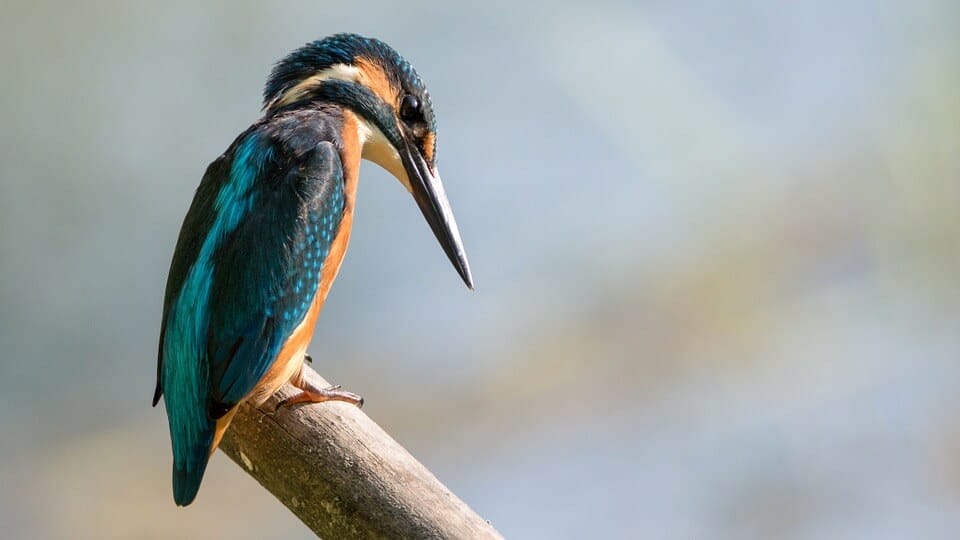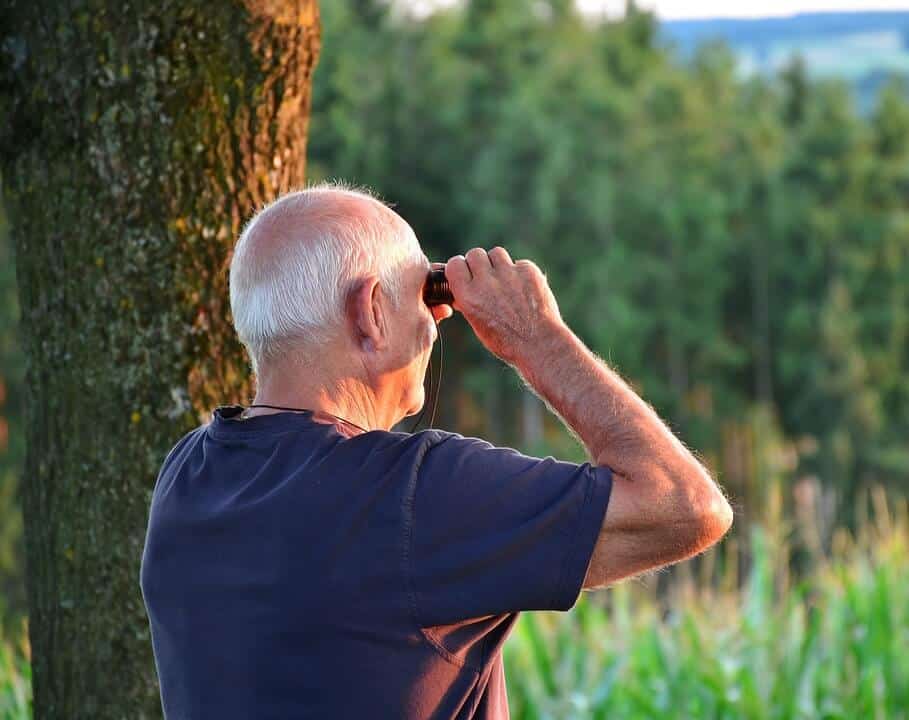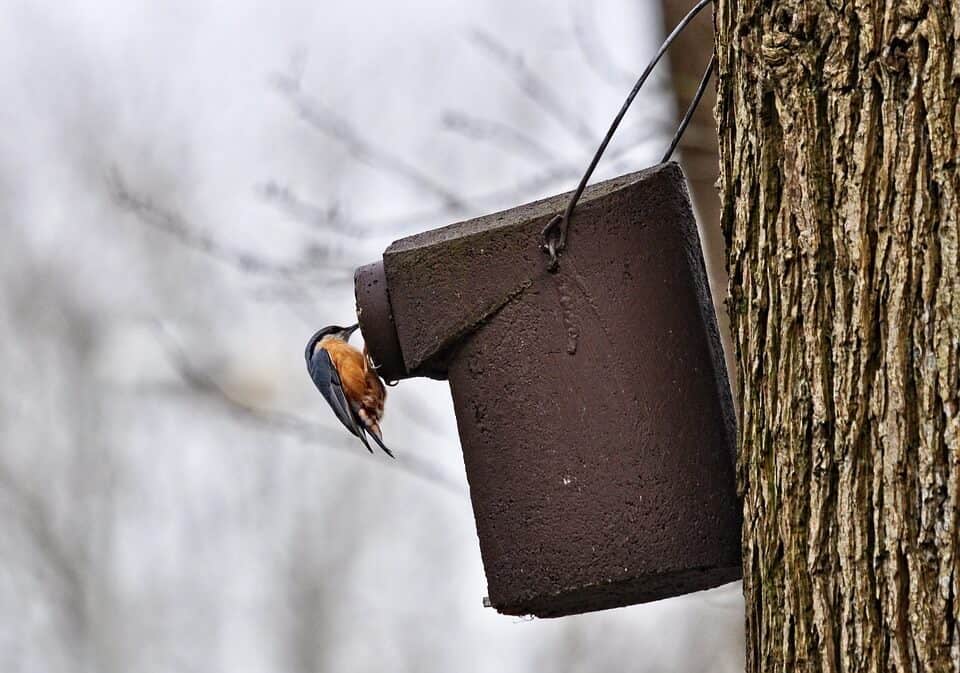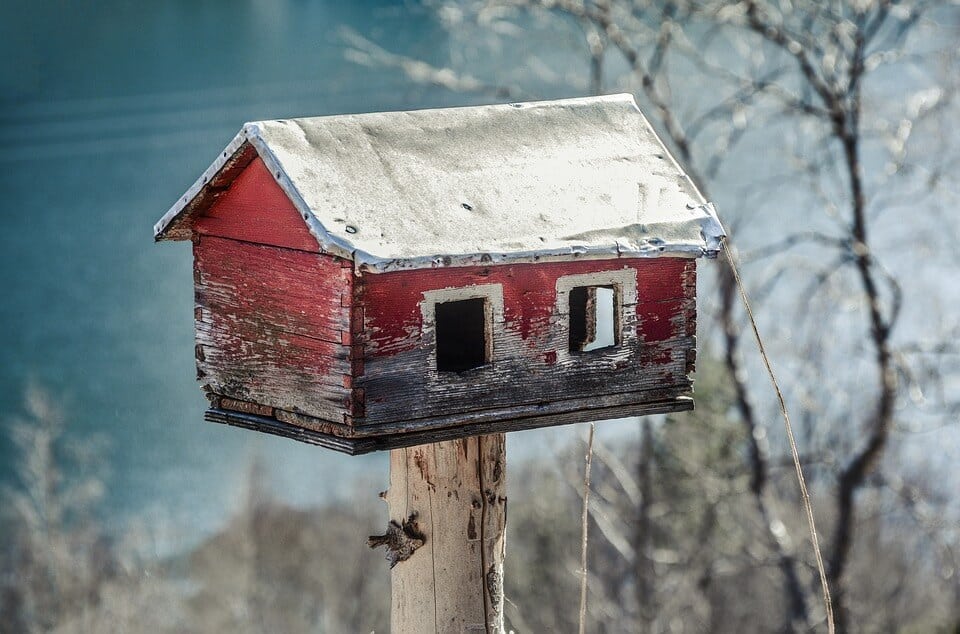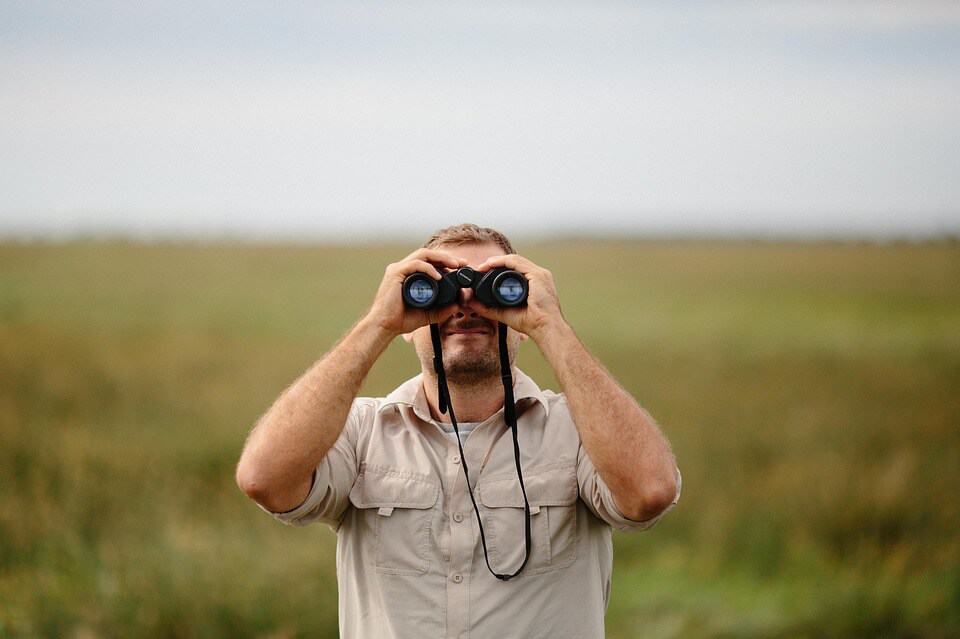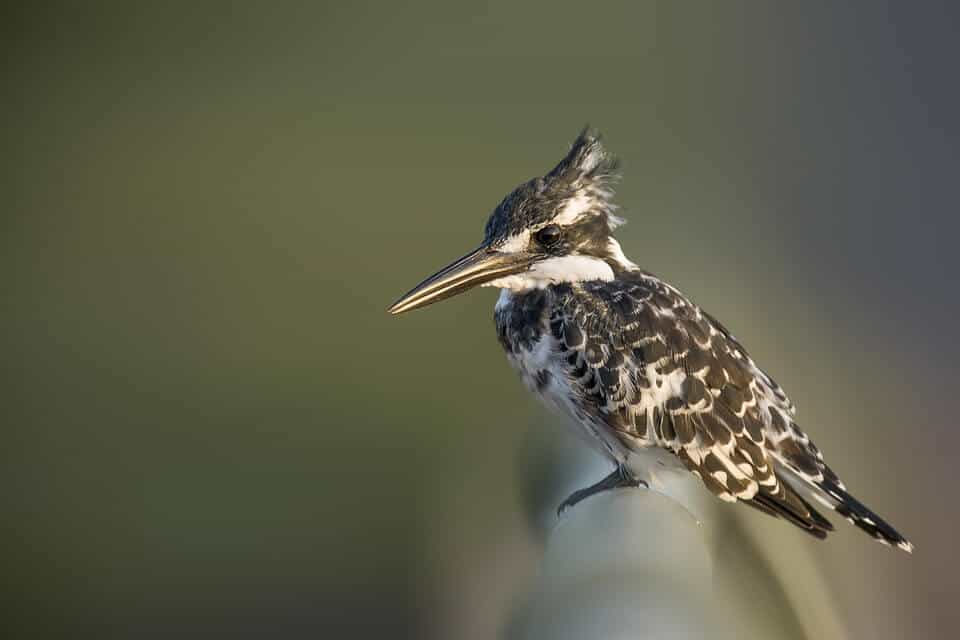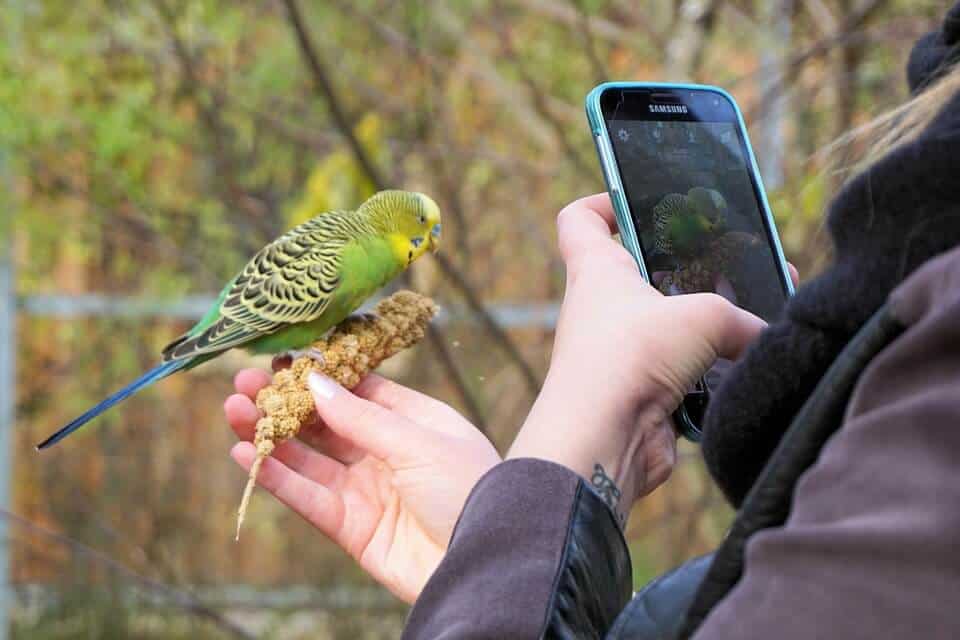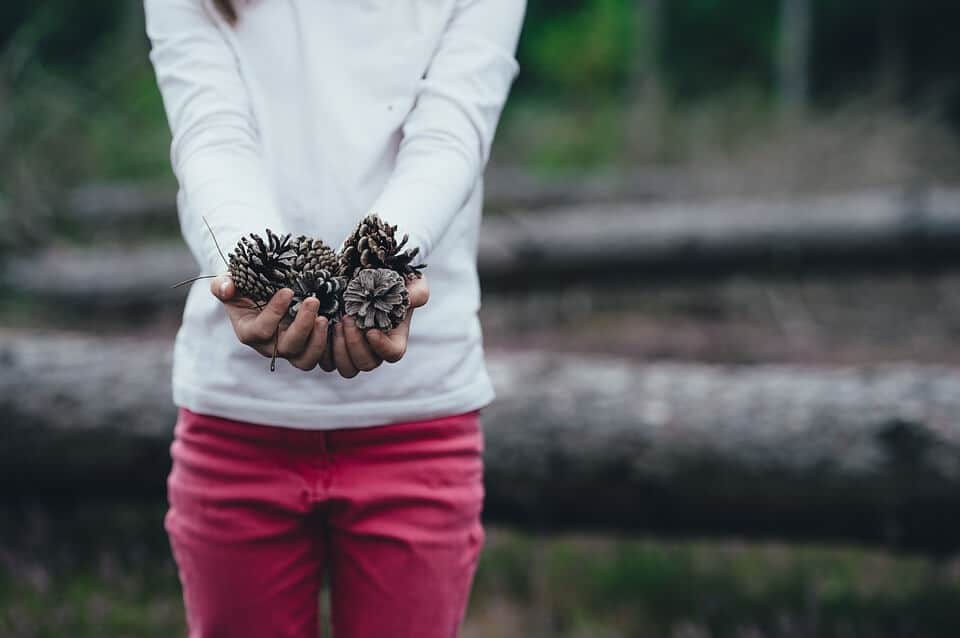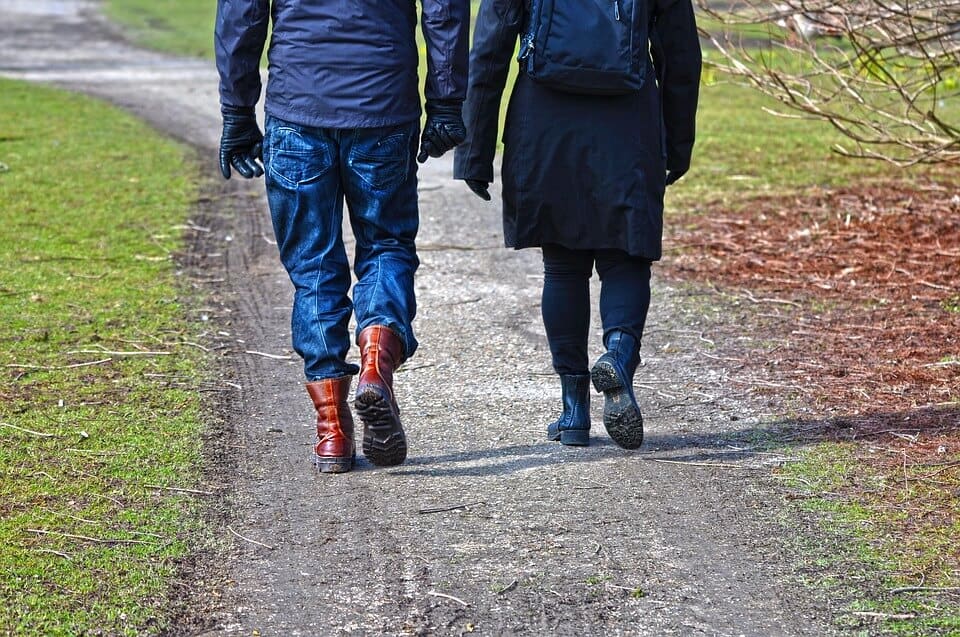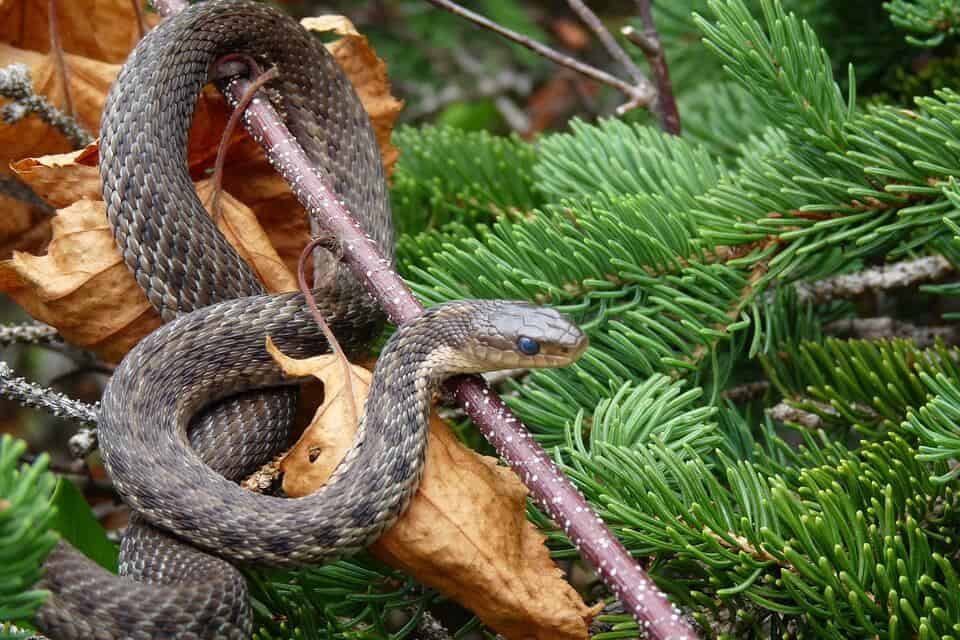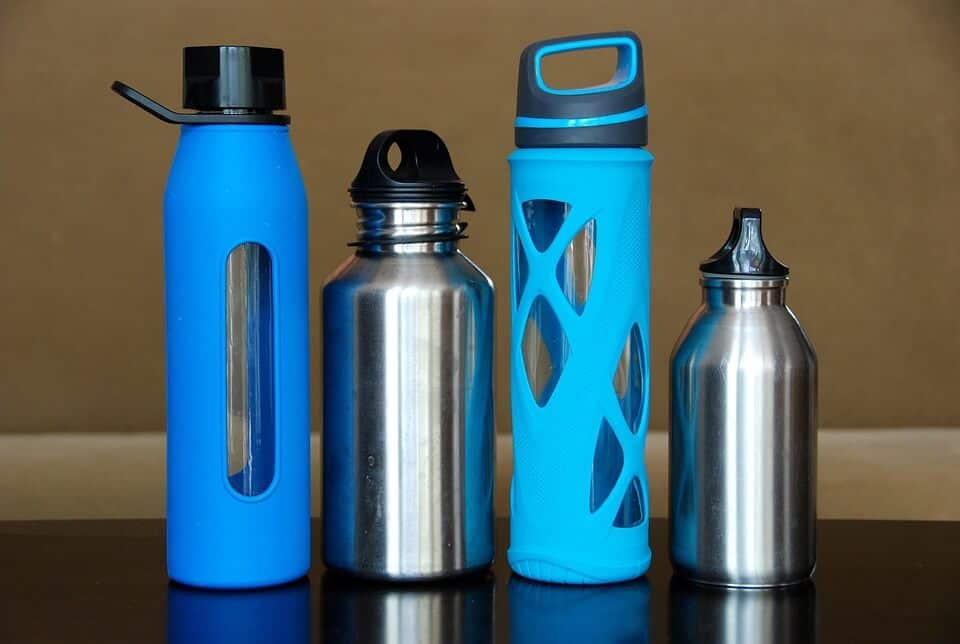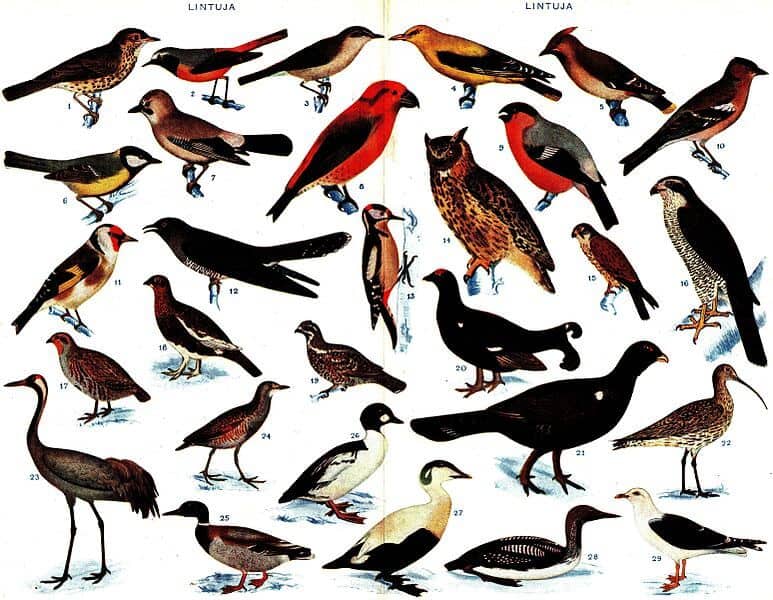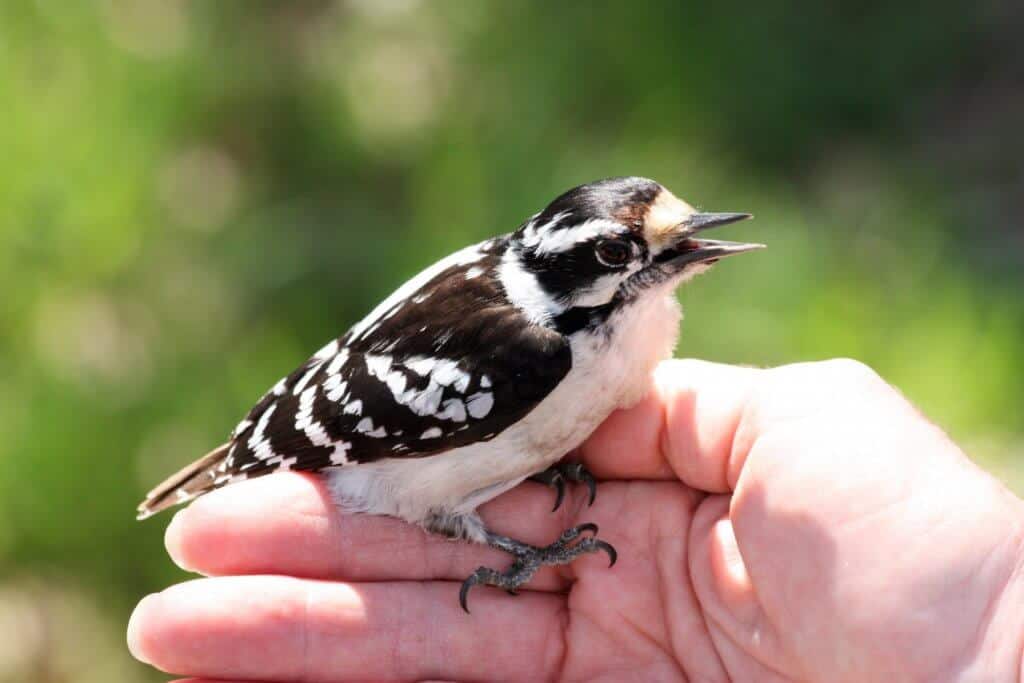Bird watching is an amazingly popular pastime. An estimated 85 million Americans are fascinated with bird watching, and truly anyone can take up this hobby.
‘Birding’ is another term for bird watching and can be as simple as putting up a backyard bird feeder, to as complex as joining bird watching tours that take place all over the world.
This bird watching beginner’s guide will explore the various forms of birding, cover necessary equipment, and get you started on your migration into the world of birds.
What Is Bird Watching?
Bird watching is simply that: watching the birds that are all around us in nature. As soon as the night fades with the dawn, birds begin to sing outside our windows. Birds are everywhere: our yards, parks, woods, and cities.
Bird watching is also known as:
Why Watch The Birds?
Birding can decrease stress. Numerous scientific studies have linked being in nature to reduced stress. One study, done by the University of Exeter and reported in Science Daily, summarised these results:
The study monitored the mental well-being of almost 300 people. Data concluded that the more birds people saw during their day, the less likely they were to be stressed or anxious. Might give an entirely new dimension to the phrase ‘bird brain,’ right?
BecauseBirds, an online digest dedicated to bird watching, expands on the health benefits of birding by adding these:
- Good exercise
- Fresh air
- Restores optimism
- Increases relaxation
- Quiets worry
Doctors tell us that reducing our stress levels increases our overall health from head to tail feathers.
How To Start Bird Watching
Getting started in birding might conjure up images of safari hats, binoculars, ID books and hiking boots. While you may end up with all of this gear as interest in birding grows, all that is not necessary to begin.
The easiest way to begin birding, according to Owlcation, is to bring the birds to you. Offering food, water and a habitat that is bird-friendly can have you birding in no time.
This would make you a ‘backyard birder,’ and Americans love to feed their feathered friends. As many as 40% of us have backyard feeders, according to Audubon.
There are several various types of bird feeders, and different bird species may prefer each type. Some of the feeder choices are:
Wildlife experts and Ornithologists (bird scientists) encourage backyard birders to use safe and healthy bird feeding practices. Check out these sources for backyard birding best practices, feeders, and habitat:
- Backyard Birding: Audubon
- Feeding the Birds: Owlcation
- To Feed Or Not To Feed: Audubon
- Do Birds Get Dependent On Feeders?
- How To Choose The Right Kind Of Bird Feeder
Health Benefits of Bird Watching for Exercise
Some consider bird watching as a means of stress relief. However, there are many health benefits of bird watching, including weight loss and improved health through exercise. The health benefits improve when combining bird watching with a healthy diet. When considering bird watching for weight loss, remember you’re outside benefiting from the fresh air. Also, when you’re bird-watching for weight loss, you’ll be engaging in light to moderate exercise by walking from one location to another.
- Birding for Health
- The Health Benefits of Bird Watching
- Four Reasons You Should Take Up Birding
- Birdwatching Helps Older Adults Reconnect with Nature and Their Health
- Meal Planning for Backpacking
How Do I Attract Birds To My Yard?
Not that into hiking the hills to find feathered features? No problem. Becoming a ‘backyard birder’ is fun, simple, and can be enjoyed by the entire family.
Wild birds can be attracted right into the backyard, and even small yards can become bird-friendly. According to Birds Forever, there are four basic elements to transforming your yard into a bird sanctuary:
Food
Everyone has to eat, and the birds enjoy feasting on a wide variety of nuts, seeds, and suet.
Different bird species prefer different foods. The North American Bird Feeding Chart will guide you in deciding what foods to offer.
The type of food offered determines the feeder style. There are hanging style feeders as well as platform type feeders from which to choose.
Shelter
Birds feel safer when there are trees and shrubs close to their food sources. Birds will build nests in the plants that grow near your yard. If your yard does not have bushes or trees, consider planting some native species.
Offering nest boxes and nesting material attracts birds as well. Birds often use the same nest every year and can become part of your backyard habitat. Birds eat the bugs that bug us as well- an added benefit of welcoming them into the yard.
Keep in mind that different birds like various styles of nest boxes. Choosing specific styles of birdhouses can ensure a variety of birds to enjoy. Don’t forget to clean the houses out when the baby birds fledge. Keeping the house clean ensures healthy bird buddies.
Water
A fresh water source is vital to birds, and providing it can be a powerful attractant. The sound of water flowing is deeply attractive to birds and will draw them into your backyard habitat. Consider adding a mister or circulating pump to a birdbath- the louder, the better!
Habitat
Diversity in plants offered will attract a wider variety of birds. Offer tall, medium, and shorter height plants, and consider native plants that birds find familiar.
Plants that produce nuts, seeds, nectar, and berries add additional food sources along with perching space. Want to know how to plant a backyard habitat that helps your local wildlife? The National Wildlife Federation offers many articles on doing just that. They even provide certification that shows your commitment! Check it out here:
What Equipment Does Bird Watching Require?
Truthfully, the only thing needed to start birding is a set of eyes and ears. Birds live all around us, sharing our habitat. Taking a stroll through yard or park, and paying attention to the birds and birdsong is what this hobby is all about.
However, there are a few pieces of gear that can make birding even more fun. Let’s get a bird’s eye view.
Binoculars
Binoculars are an essential piece of birding gear. Binoculars allow birders to zoom in and get a magnified view of distinguishing features. Many birds that appear alike may be different species. An excellent example of this is the black-capped chickadee vs. the white-breasted nuthatch. Both are black and white, with black caps on their heads. Seen with the naked eye, they may appear identical. Zooming in with binoculars makes the differences clear.
The Nature Conservancy suggests waterproof binoculars with an easy-to-use focus that have a minimum of 8x capacity and a front lens. To identify these types of binoculars, look for 8×32 and 10×42 types. Also critical: make sure they fit your hands comfortably and are not too heavy.
Spotting scopes are fast becoming a preferred way to view wildlife. Spotting scopes are similar to telescopes, but they are small and portable. The magnification is higher than binoculars, which allows birders and other outdoor enthusiasts to see birds and animals that might be out of range with binoculars. Imagine a nesting eagle, for example. A spotting scope will allow viewers to get a ‘bird’s eye view’ of the nest and chicks, without having to get so close that it might disturb the mama eagle.
Field Guides & Bird ID
Identifying the birds seen during a walk, or eating at a backyard feeder can be very exciting. Identifying a bird’s markings and song satisfies our thirst for knowledge.
Of course, there are plenty of online resources to figure out bird identification, and we will take a look at those resources next. But a book that has photos, and discusses habitat and geographic location, might be handier in the field. Using a manual may also keep us from getting sucked into our cell phones!
A good field guide is crucial for identifying the birds around you. Bird field guides are often separated by species or type of bird, to help viewers narrow down which bird they are seeing.
Field guides vary and can be purchased for identification by:
- State
- Region
- Country
- Type of bird (waterfowl, hummingbirds, etc.)
- Bird sounds
Here are a few places to explore field guides:
- Birding bookstore
- National Geographic’s Field Guide to the Birds of North America
- 10 Field Guides for the Serious Naturalist
Recording Equipment
A camera (even your cell phone cam) and notebook will help birders take notes in the field. Reminders of color, pattern, and size of a bird never before seen can assist birders in identification at a later time. There are unlimited resources for identifying your bird online:
Many people keep a bird watching journal to track every species of bird they see.
Birding Apps
There is even an app for that- of course! Download an app to your Android or iPhone for real-time bird ID on the go.
Outdoor Gear
Once birding becomes a serious hobby, serious outdoor clothing may be needed. While fashion is always a concern, the main reason for outdoor gear is comfort and protection from the elements. Color choices matter as well- blending into the environment makes birders less frightening to wildlife. Other considerations:
- Cargo pockets for carrying gear
- Belt loops for tools
- Quiet clothing: avoid noisy nylon and clanging buckles
- Hats shield the eyes and break up your profile
- Long sleeves offer protection from the sun and insects
- Good hiking boots or shoes keep feet dry and blister-free
Here are some additional links to birding gear resources:
Is Bird Watching Safe?
If your idea of birding means walking in the woods, there are some safety tips and guidelines worth following. Audubon recommends:
Bird With A Friend
Any activity that involves the possibility of injury or of getting lost benefits by having a companion- and birding is no exception. Looking up into the trees, or gazing through scopes and binoculars, set the stage for increased risk or tripping, falling, and twisting ankles.
Also, having an extra set of eyes helps to watch for the desired wildlife (say, birds and butterflies) as well as the undesired wildlife (such as bears and snakes).
Still prefer to go solo? Always leave a detailed explanation of where you plan to explore, and what time you expect to be back.
Experts advise carrying a loud whistle as well. The sound of a whistle may deflect advances from dangerous wildlife, as well as alert others close by that you need assistance.
Avoid Conflict
Bird watching isn’t the only activity taking place in the woods. Hunters and campers frequent these spaces as well. Sometimes wildlife viewing may conflict with hunting activities. Be safe and respectful when sharing the woods. I mean let’s face it- these guys have guns. You have a bird ID book. ‘Nuff said?
Also, be sure to bird watch on public land to avoid trespassing. Trespassing may just be about ownership rights, but there is always the possibility that hazardous materials may be another reason for keeping the public out of some spaces.
Watch For Dangerous Wildlife
Honestly, people can be more dangerous than what you may find in the woods. However, there are a few things to watch for. Bears and snakes are primary concerns.
Most bears merely avoid humans, but should you see a bear, experts advise moving away from it while making noise- such as singing or yelling. This generally avoids interaction with bears.
Snakes also prefer to avoid humans but may do so by remaining still. Be sure to wear sturdy hiking boots or shoes, as most snake bites happen on the feet and ankles. Always look carefully before sitting down or placing hands near the ground.
The bugs can be the most annoying and dangerous critters in the woods. Lyme is a nasty infection, and hikers should always tuck in pant legs and douse with insecticide. Mosquitos and black flies can make your hike unpleasant as well, and mosquitos can spread illness.
Watch For Dangerous People
The bears and snakes might be scary, but other people may be a danger as well. Keep valuables out of sight and make sure to have a charged cell phone in case of emergency.
Take Food and Water
A stroll in the woods to add to your bird ID collection may not require a lot of calories. But finding yourself hungry or thirsty when on the birding trail can cut the day short- or at least cut down on your comfort.
Weather can be unpredictable, and staying hydrated is crucial. Birding enthusiasts recommend taking along easy-to-carry snacks like trail mix, along with plenty of water.
Getting lost is also a possibility. Following that elusive scarlet tanager through the woods can result in losing the trail. Having food and water along will sustain birders who wander too far from the trail.
Be Prepared For Weather Changes
Weather is very changeable, and microclimates may also cause unexpected shifts in temperature and precipitation. Bird watchers are encouraged to:
- Dress in layers
- Wear water-resistant shoes
- Carry lightweight rain gear
- Have a hat, sunscreen, and sunglasses
The Basics Of Bird Identification
Do the birds all look alike in your opinion? This is a common experience for beginning birders. After all, there are over 800 bird species in North America! That’s a lot of feathers.
The Cornell Lab of Ornithology suggests that there are four skills to learn that help in basic bird identification. While birding, pay attention to:
- Size & shape of the bird
- Color patterns (striped? soft colors?)
- Bird behavior (creeper? percher? waterfowl?)
- Habitat (trees? grass? water?)
Looking for and noticing these for key points will help beginning bird watchers more easily find the bird in field guides.
Common Birds To Watch For
OK, you are ready! Feeders are installed, filed book is ready, hiking books waiting at the door. What birds might beginners expect to see? Every region will have different species of birds, but there are a few that can be found throughout the United States. Here is a list of the most common birds in the U.S.:
Mourning Dove
This is a medium-sized bird with a gentle nature. The Mourning Dove has a soft, buff-colored body with some black spots and wig tips. They have a sweet cooing song that sounds a tad mournful- hence the name.
Downy Woodpecker
This is a small woodpecker with a bright red spot on the head. Both males and females have sharply patterned black-and-white bodies. They can be seen clinging to the bark of trees, looking for bugs to dig out with their short but powerful beaks.
American Robin
This bird is recognizable by many Americans. It has a bold orange-red breast and is quite common in yards, parks and wooded areas around the country. Robins eat a lot of the bugs that bug us and are often considered the harbingers of Spring.
Here are a few other common birds to explore:
The Bottom Line On Bird Watching
Bird watching is a hobby that any person can get involved in. Birding can be done in the backyard, in local woods, and parks. Some birders take bird watching vacations and tours all over the world.
Connecting with nature is a proven way to relax and reduce stress. Backyard birding is available even for less mobile people, including those with disabilities or physical limitations. Consider installing a birdbath or feeder and connecting with feathered friends from your window.
More mobile people can gain the benefits of birding by walking or hiking.
Regardless of your birding choices, bird watching can be fun, rewarding, and inexpensive. The birds don’t just help us either- by providing food and habitat we help the birds as well.
Additionally, bird watching can be incorporated into a healthy lifestyle. Although the hobby itself doesn’t outline guidelines for making healthier choices, there are other programs that can help.
Noom is one of the best programs we have ever seen. The app “tricks” your brain into making healthier lifestyle choices and ultimately, lose weight. This is done through a number of interactive features, like human coaching sessions, virtual community support, and custom meal plans.
If you’re ready to give the plan a try, Noom is offering a free trial offer for all Dietspotlight readers.
Bird Watching – Beginner’s Guide for Hobby, Health & Wellness Questions & Answers
- Recent:
Yes, bird watching is a sustainable activity that has minimal impacts on the environment. Not only does it provide an enjoyable recreational activity for nature lovers, but it helps to protect bird habitats around the world and ensure their continued survival. Additionally, bird watching requires very little supplies or equipment, so those who participate in this activity do not need to consume extra resources.

Summer Banks has researched over 5000 weight-loss programs, pills, shakes and diet plans. Previously, she managed 15 supplement brands, worked with professionals in the weight loss industry and completed coursework in nutrition at Stanford University.

